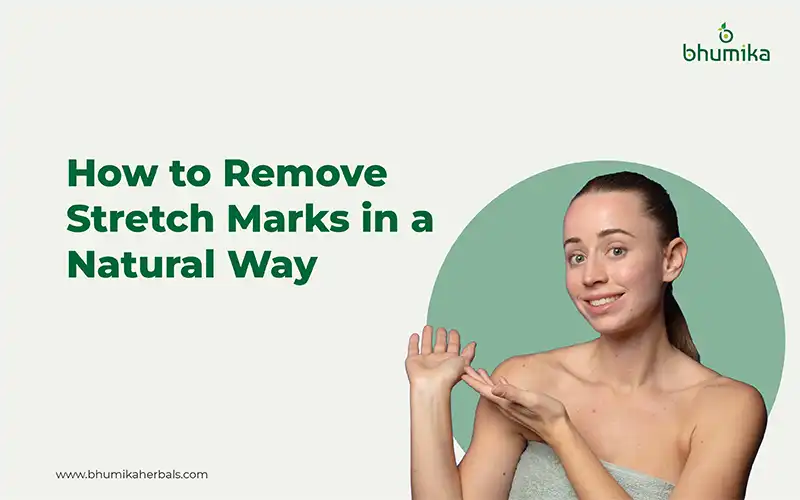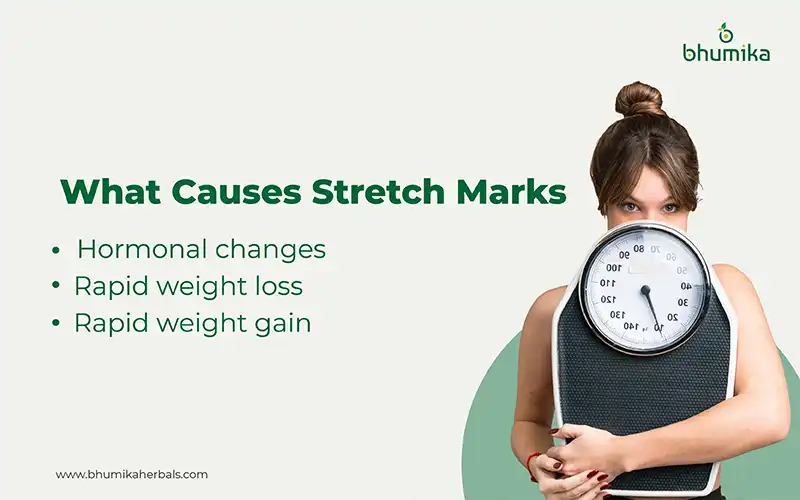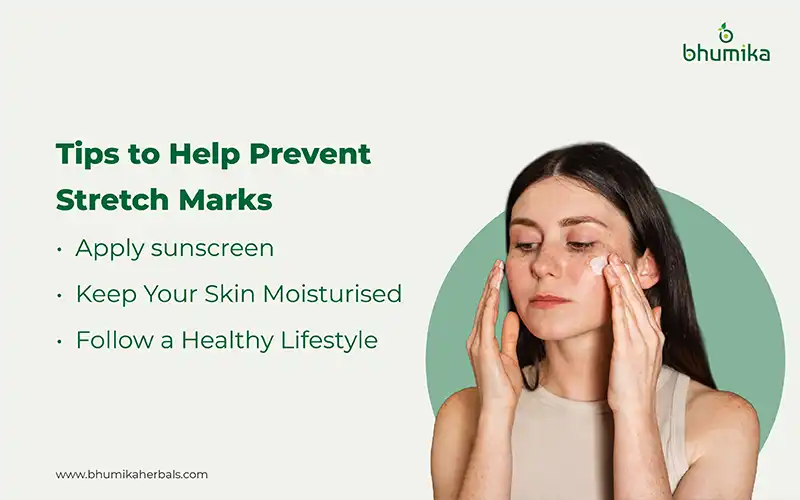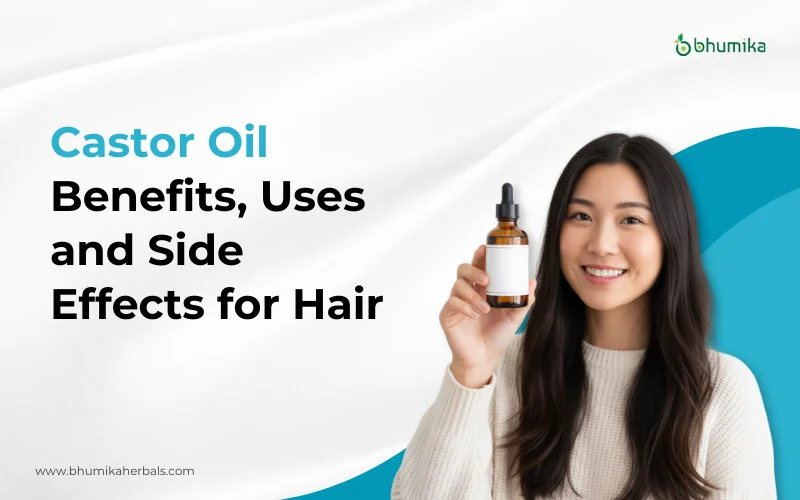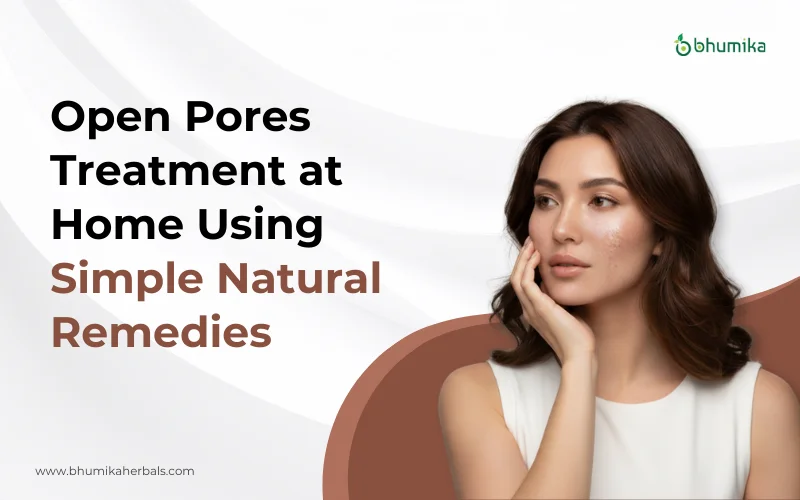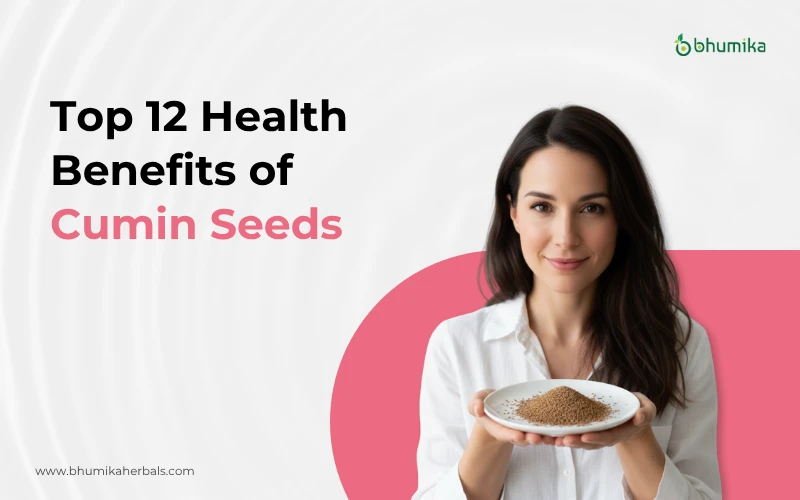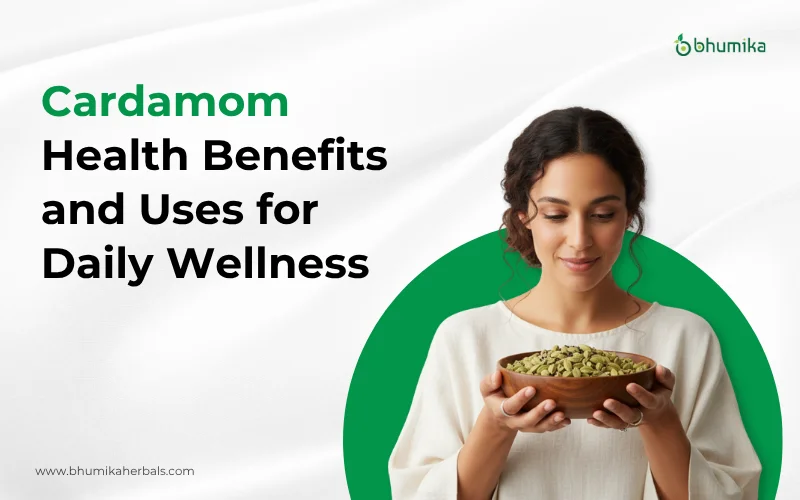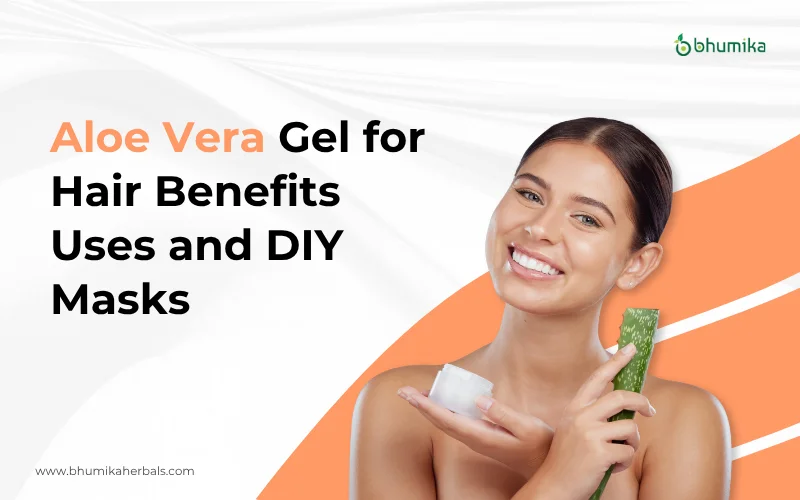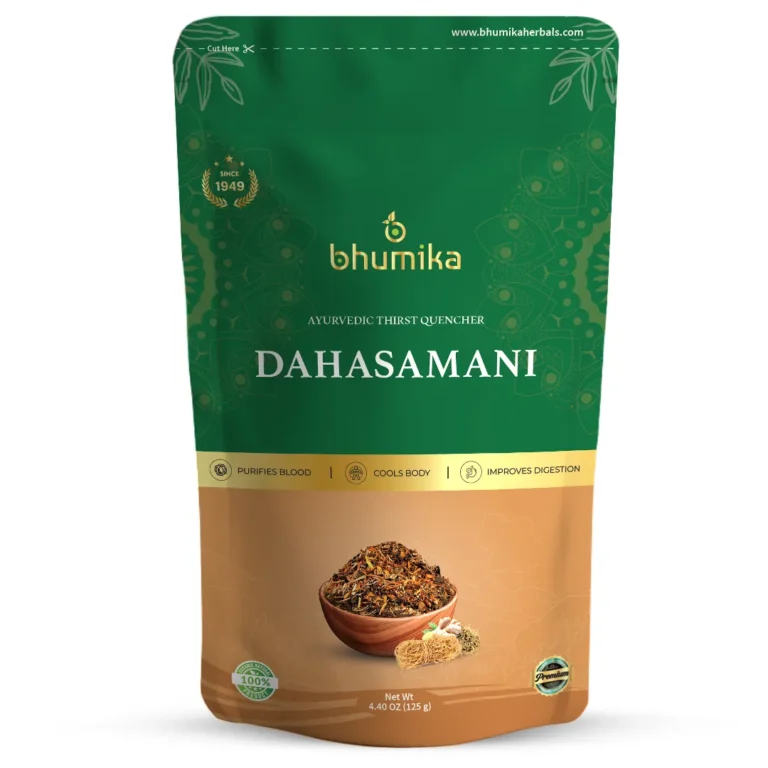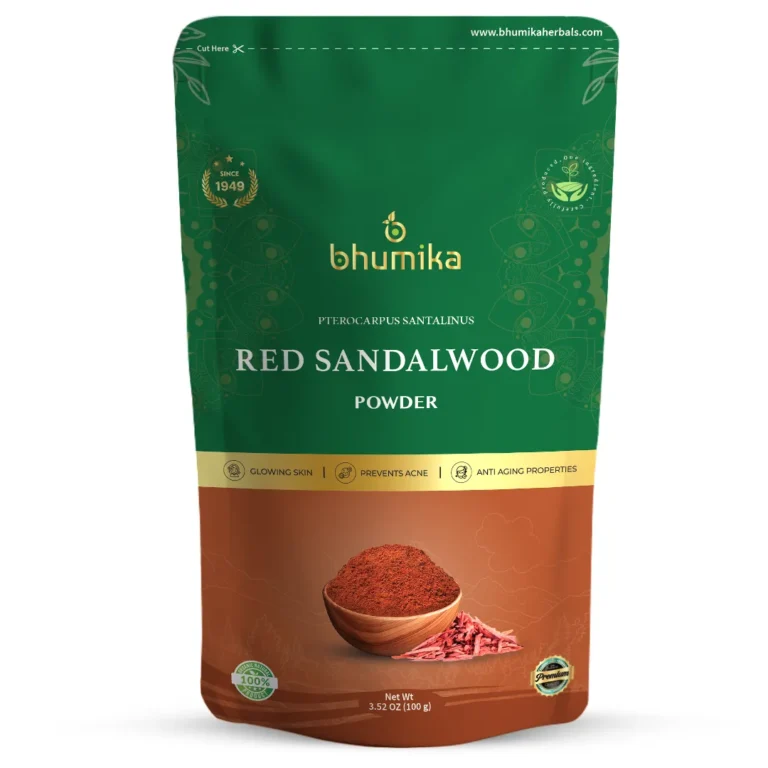How to Remove Stretch Marks in a Natural Way
Share this!
Stretch marks are a natural part of life, but many people feel uncomfortable about them. While it’s not possible to fully stop new stretch marks from forming or completely erase the ones you already have, learning how to remove stretch marks with the right care and remedies can reduce their appearance and improve your skin’s texture. In this article, we have covered some of the natural remedies and medical treatments that you can try to remove stretch marks.
What Are Stretch Marks?
Stretch marks are lines that appear when the skin stretches too much and too quickly, causing the inner layers to tear slightly, creating a scar on the skin.
At first, the skin in that area may feel very itchy, and the marks can look raised and red, purple, or brown, depending on your skin tone. Over time, these marks become lighter and turn white, making them more noticeable.
What Causes Stretch Marks?
Here are some common causes of stretch marks:
- Pregnancy:Pregnancy stretch marks occur when your skin stretches a lot, as the body grows quickly.
- Hormonal changes: When you have high levels of cortisol (a stress hormone) or undergo any specific health issues, your skin’s strength is disrupted, and you are more likely to develop stretch marks.
- Rapid weight loss: You get stretch marks after weight loss as your skin loses its elasticity when you lose weight too quickly.
- Rapid weight gain: When you gain weight fast, the skin stretches more than usual, causing your deeper skin layers to tear and leaving stretch marks.
- Growth spurts: Teenagers often get stretch marks during puberty due to sudden growth in height, especially around the hips, knees, underarms, and elbows.
- Exercise and muscle gain: When you lift heavy weights, your skin stretches, causing marks on areas like the biceps, thighs, arms, and hips.
- Steroid creams: Using steroid creams without medical advice can also lead to stretch marks. Always use them only when prescribed by a doctor.
Natural Ways to Remove Stretch Marks
You may try these natural remedies for stretch marks, given below, to reduce their appearance:
Retinol and Vitamin A
Retinol, which is a form of vitamin A, is known to help reduce stretch marks. It can repair skin cells, make your skin smoother, softer, and more youthful. That’s why it’s commonly found in many skincare creams and lotions. Using or consuming vitamin A can help strengthen the skin and gradually fade stretch marks.
Method:
You can apply vitamin A oil directly to the stretch marks by using the oil from vitamin A capsules. This will help improve the skin’s texture over time. Also, eating vitamin A-rich foods like milk, eggs, leafy greens, and tomatoes is beneficial.
Sugar Scrub
Sugar works like a natural exfoliator for your skin and can be considered a gentle at-home microdermabrasion. This method will help exfoliate the skin and boost blood flow, supporting the fading of stretch marks over time.
Method:
Mix 1 tablespoon of sugar with a few drops of vitamin E oil or any essential oil of your choice.
Apply the mixture to the areas with stretch marks and gently massage in small circular motions.
Coconut Oil and Aloe Vera
Coconut oil and aloe vera are both excellent natural moisturisers that can keep your skin soft and hydrated. Coconut oil can help heal your skin, whereas aloe vera can support skin repair and renewal. Coconut oil helps prevent new stretch marks; hence, pregnant women are often recommended to massage it onto their belly to avoid stretch marks.
Method:
In a bowl, mix 2 tablespoons of coconut oil with some fresh aloe vera gel.
Apply this mixture daily to the areas with stretch marks.
Sweet Almond Oil
Sweet almond oil is a highly beneficial skincare ingredient that can help with problems like dryness, dark circles, and stretch marks.
Almond oil, abundant in vitamin E and other nutrients, can keep the skin soft, support healthy skin cells, reduce redness, and slowly fade stretch marks.
Method:
Warm a little almond oil and gently massage it in circular motions on the stretch marks.
Let the oil soak into the skin.
Do this twice a day, and follow up with a moisturiser for best results.
Baking Soda and Lemon Juice
Baking soda, due to its exfoliating properties, can help remove dead skin cells, whereas lemon juice has skin-lightening properties that can offer you an even skin tone.
Method:
Mix 1 teaspoon of baking soda with half a lemon juice. Apply this paste to the stretch marks and cover the area with cling wrap or a kitchen towel. You can wait for about 20 minutes before rinsing it off with water.
Please remember to do a patch test if you have sensitive skin. What you need to do is apply a small amount of the mixture to your hand or arm, leave it for 10 minutes, and see if there’s any irritation. If you don’t experience any discomfort, it is safe for use in other areas with stretch marks.
Tea Tree Oil
Tea tree oil, which is a widely known remedy for treating acne and fading acne scars, can also help remove stretch marks and other skin spots. When used regularly, it can help prevent deep scars and slowly reduce the appearance of stretch marks over time.
Method:
Mix a few drops of tea tree oil with half a teaspoon of olive oil. Gently massage this mix onto the stretch marks. You may also add a little coconut oil or vitamin E oil for extra nourishment. Leave it on overnight and rinse it off the next morning for the best results.
Glycolic Acid
Glycolic acid is a type of AHA (Alpha Hydroxy Acid) that can keep your skin moisturised, boost collagen production, and fade stretch marks over time.
This glycolic acid is especially helpful for women with red or purple stretch marks. It’s safe to use during pregnancy and can be easily found in stores.
Method:
Apply a small amount of glycolic acid to the stretch marks before going to bed, then wash it off in the morning. Avoid sun exposure after applying it, as it can make your skin more sensitive to sunlight, so it’s best used at night.
Potato Juice
Potato juice, which is often used to treat dark circles, is also effective in fading stretch marks. Potatoes contain natural starch and skin-lightening enzymes that can reduce marks and spots. The presence of catecholase, a natural bleaching agent in potatoes, can help brighten the skin and fade blemishes.
Method:
Grate a potato and squeeze out its juice. Mix the juice with the leftover pulp and apply it to the stretch marks. Allow it to dry for about 30 minutes, then rinse with cold water.
Egg Whites
Eggs are rich in nutrients that are good for your overall health, including skin and hair. However, egg white, in particular, can help reduce the appearance of stretch marks.
Method:
Separate the egg white from the yolk and apply it directly to the stretch marks. For best results, you can use this remedy twice a week and let it sit for about 2 hours before taking a shower.
Hyaluronic Acid
Hyaluronic acid, which is often contained in creams and lotions, can help protect the skin cells that make collagen. It can maintain the elasticity of the skin and slow down signs of ageing. When you apply hyaluronic acid as early as the stretch marks start to show up, it can prevent the stretch marks from becoming visible.
Medical Treatments to Remove Stretch Marks
Stretch marks can also be treated by following these medical treatments:
Microdermabrasion
Microdermabrasion is a gentle, non-surgical treatment that involves the removal of the top dead skin layer through light exfoliation. This technique helps to boost the skin’s natural repair process and promotes the growth of new collagen, which can reduce the appearance of stretch marks. Even though the procedure is mostly painless and safe for most people, it might require several sessions to see the best results.
Chemical Peels
Chemical peeling is a treatment in which a special solution is applied to the top layer of the skin to gently peel off. This will promote the growth of new and healthier skin cells, which can improve the look of stretch marks over time. Depending on how deep or dark your stretch marks are, you may need several sessions to see noticeable results. Also, it’s a good idea to talk to a skin specialist or dermatologist to make sure this method is safe and right for your skin type.
Laser Therapy
Laser therapy is one of the modern and effective ways to treat stretch marks. Two common types of laser therapies are pulsed dye lasers and intense pulsed light (IPL) treatments. These methods will help boost collagen and encourage skin cell renewal, making the skin look smoother and even-toned.
Even though these laser treatments are more costly than other options, people find them worth it because of the visible improvements. These treatments are usually done by trained skin experts or dermatologists who specialize in laser care.
Microneedling
Microneedling, also called collagen induction therapy, is a stretch mark removal treatment that uses tiny needles to create small holes in the skin. These tiny punctures will trigger the body’s natural healing process and promote collagen and elastin production. Some people might notice some redness or mild irritation after the procedure, but many people find microneedling to be a safe, effective, and mostly painless way to reduce stretch marks.
Radiofrequency Therapy
It is a modern, non-invasive method that can be used to treat stretch marks, which involves sending radio waves deeper into the skin by gently heating the lower layers. This will boost collagen production and help tighten the skin.
With regular sessions, this treatment can make stretch marks less visible and improve the skin’s overall texture. Just like laser treatments, multiple sessions may be needed to see the best results.
Tips to Help Prevent Stretch Marks
Given below are some stretch mark removal tips:
- Apply sunscreen: Applying sunscreen cannot cure stretch marks, but it can help keep your skin healthy and make it look better. Sun exposure can make your scars more visible and can cause skin problems such as sunburn or even skin cancer. Always wear a good-quality sunscreen when going outside.
- Keep Your Skin Moisturised: Always apply a moisturiser right after a shower when your skin is still damp to lock in moisture and keep your skin soft and flexible. This tip may be especially useful for pregnant women, as their skin stretches quickly and may feel itchy.
- Follow a Healthy Lifestyle: Drink enough water, eat a balanced diet rich in fruits and vegetables, and stay active. All of these lifestyle changes can help you maintain a stable weight and keep your skin healthy.
- Avoid Quick Weight Changes: Gaining or losing weight too quickly can cause your skin to stretch or shrink suddenly, leading to stretch marks. Try to maintain a steady weight, and during pregnancy, aim for slow and healthy weight gain.
The Bottom Line
Stretch marks are completely normal and nothing to be ashamed of, as they are a part of life for many people. While they may not go away fully, learning how to remove stretch marks can help reduce their appearance and prevent the chances of getting them.
There are several medical treatments and natural home remedies for stretch marks you can try to make them less noticeable. However, you should speak with a dermatologist before starting any treatment for stretch marks, as they can help you figure out the best option for your skin. With the right approach, you can improve your skin’s appearance and feel more confident.
Frequently Asked Questions on How to Remove Stretch Marks
How do you get rid of stretch marks fast?
Can vitamin C remove stretch marks?
Will stretch marks be removed?
Can coconut oil remove stretch marks?
Is it painful to remove stretch marks?
About the Author
Vishnu Raj
Related Posts
Split ends are one of the most common hair problems,...Read More
For generations, people have used and trusted castor oil to...Read More
We always dream of having smooth and clear skin, but...Read More
Cumin seeds are a spice known for their rich flavour...Read More
Cardamom, called the queen of spices, is a widely known...Read More
Aloe vera, which is a plant easily found in our...Read More
Coconut oil is one of the most popular hair care...Read More
Sesame oil, rich in nutrients and other vitamins, can help...Read More
Share this!
Share this!
Shop by Concern
Acne & Pimples (9) Dandruff & Scalp Itchiness (6) Dark Circles & Puffy Eyes (4) Dead Skin Cells (6) Dehydrated Skin (4) Dry & Damaged Hair (5) Dryness (4) Dry Scalp (6) Dry Skin (4) Dull Skin (8) Excessive Oilness (4) Face Care (9) Fine Lines & Wrinkles (8) Greying (3) Hair Care (8) Hairfall (6) Hair Loss & Growth (6) Hyper Pigmentation (6) Sandalwood Products (3) Skin Brightening (9) Skin Care (8) Stretch Marks (3) Tanned Skin (5) Uneven Skin Tone/ Pigmentation (6) Uneven Skintone/ Texture (5)

